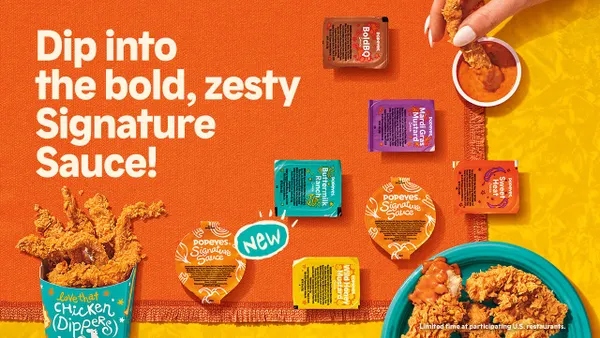Dive Brief:
- Philadelphia restaurants with 15 or more locations are now required to list warnings next to menu items that are high in salt, according to the Associated Press.
- High in salt is defined as 2,300 milligrams or more, which is the total recommended sodium intake for one day.
- Philadelphia is listed as having one of the highest prevalence of hypertension and premature death resulting from heart disease, which is linked to over consumption of salt.
Dive Insight:
America's focus on salt intake reached a new height in 2016 when the U.S. Food and Drug Administration proposed voluntary targets for reducing sodium intake. That same year, New York City won a court battle over whether it could require restaurants to place warnings on menus about items high in salt. Restaurant chains like Applebee's, TGI Fridays and Subway voluntarily labeled their high-intake menu items, but other groups like the National Restaurant Association opposed the move.
One of the reasons that some chains may be opposed has to do with the burden and expense of updating menus to reflect high-salt items. For pre-printed, fixed menus, this could be costly if the chain operates a number of store locations. For flexible menus like chalkboards or whiteboards, the change won't be as difficult. Other restaurateurs might be concerned that diners will be confused by a new label or that they will be turned off to a restaurant if it has a number of menu items bearing the symbol.
This so-called skull-and-crossbones effect could cast an overall shadow of doubt in some diners' minds. Philadelphia's warning label will consist of a red or black warning with a triangular icon that has a salt shaker inside next to the words "sodium warning." The law includes online menus on a restaurant's website, according to Restaurant Business, but does not have to be posted on menus listed on third-party delivery websites like Grubhub or Uber Eats.
This is not the first time Philadelphia has tried to curb sodium intake. In 2013, the municipality led an effort to reduce the amount of sodium in Chinese food by training 200 takeout restaurants on ways to reduce salt in menu items.
Whether menu warnings are an effective guide or deterrent for diners remains up for debate. A study conducted in Philadelphia found that only 8% of people who eat at fast food restaurants make healthy choices when calorie counts are provided on menus, for example. The warnings only seem to work when the people viewing them are motivated to make healthy choices and understand caloric consumption recommendations, according to CBS News.












